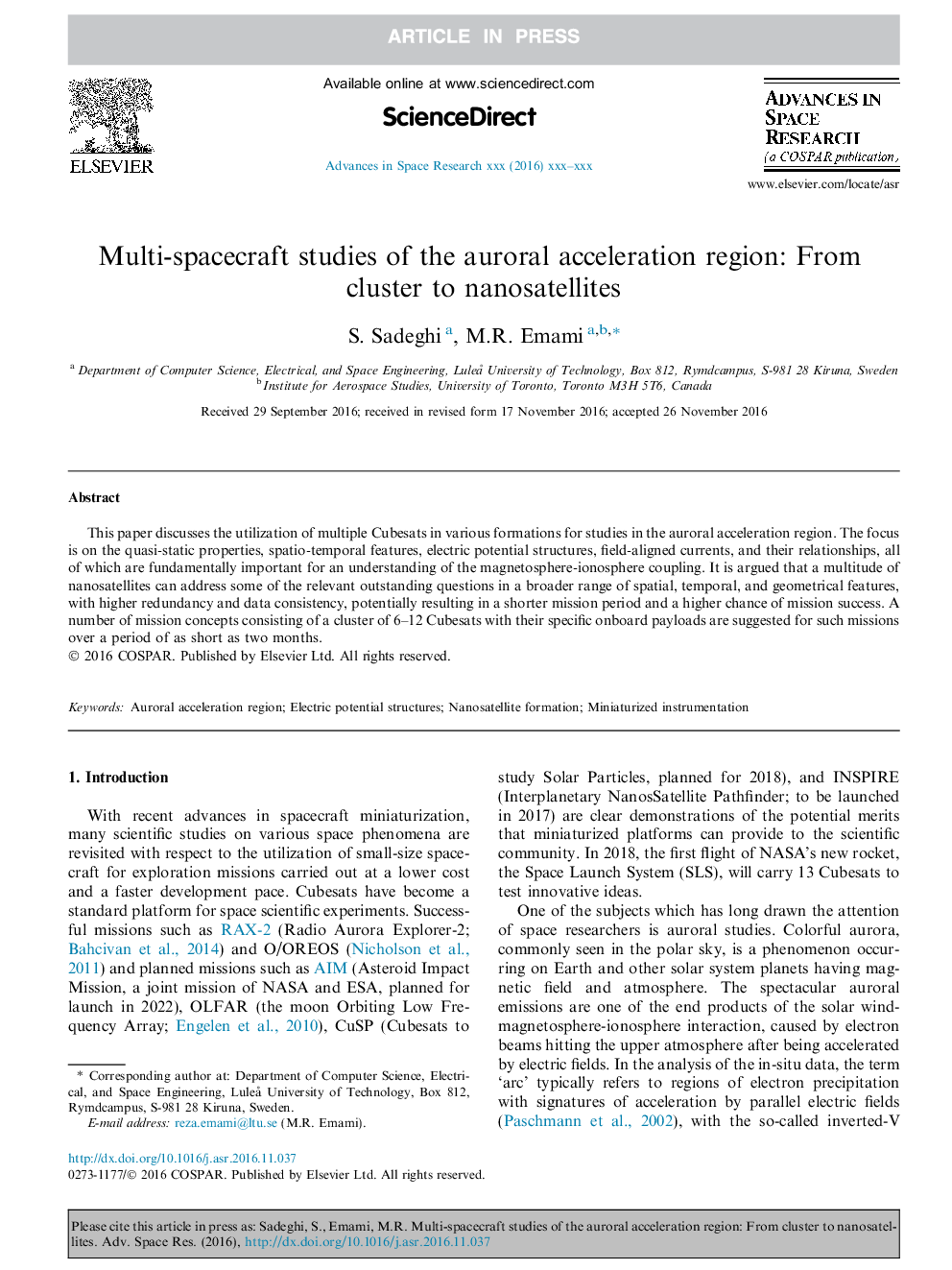| Article ID | Journal | Published Year | Pages | File Type |
|---|---|---|---|---|
| 5486251 | Advances in Space Research | 2017 | 16 Pages |
Abstract
This paper discusses the utilization of multiple Cubesats in various formations for studies in the auroral acceleration region. The focus is on the quasi-static properties, spatio-temporal features, electric potential structures, field-aligned currents, and their relationships, all of which are fundamentally important for an understanding of the magnetosphere-ionosphere coupling. It is argued that a multitude of nanosatellites can address some of the relevant outstanding questions in a broader range of spatial, temporal, and geometrical features, with higher redundancy and data consistency, potentially resulting in a shorter mission period and a higher chance of mission success. A number of mission concepts consisting of a cluster of 6-12 Cubesats with their specific onboard payloads are suggested for such missions over a period of as short as two months.
Keywords
Related Topics
Physical Sciences and Engineering
Earth and Planetary Sciences
Space and Planetary Science
Authors
S. Sadeghi, M.R. Emami,
